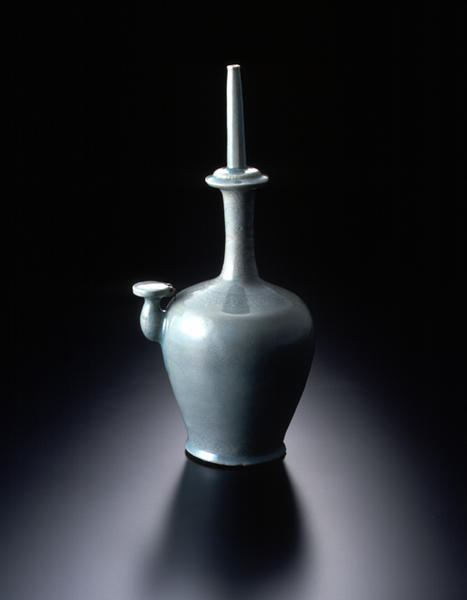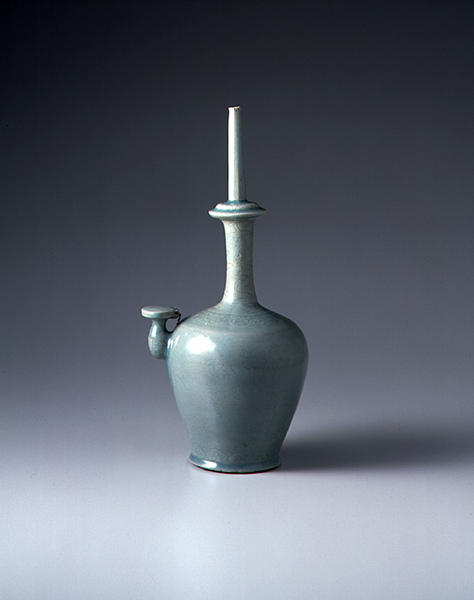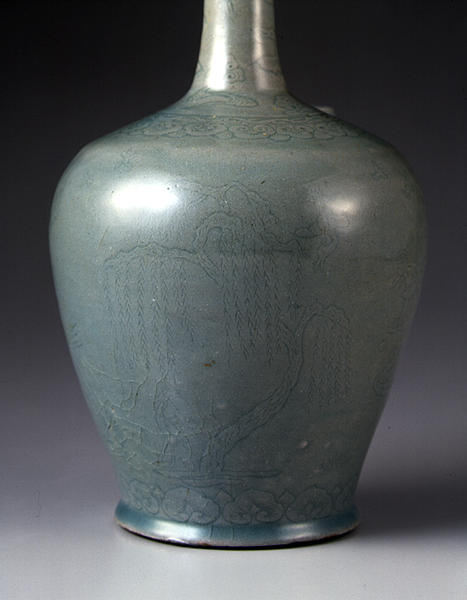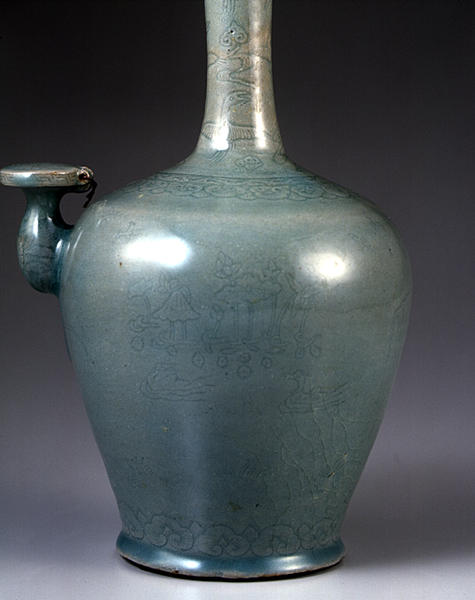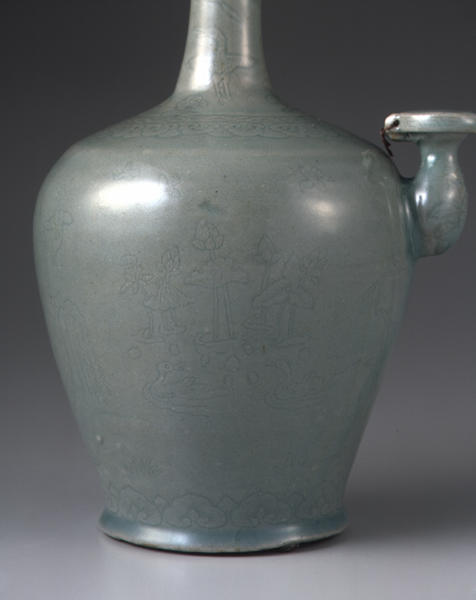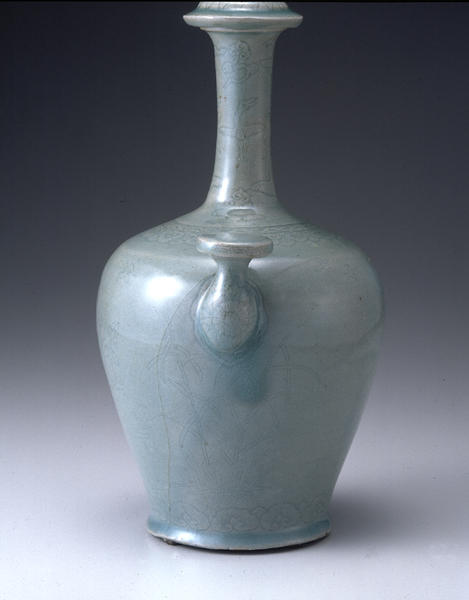青磁陽刻蒲柳水禽文浄瓶
- 高麗時代
- 12c
- 陽刻青磁
- H-35.6 D-17
高麗王朝は朝鮮史上はじめて半島を統一した国家で、モンゴルなどの北方民族の外圧に耐えながら国体を維持し918年から1392年までの475年の長きにわたって繁栄した。高麗は仏教を国教とし、国家安寧を願って各地に多くの寺院が建立され、それに伴って仏教関係の美術工芸が発達した。淨瓶もそのひとつである。
淨瓶とは仏に供えるための淨水を入れる容器で、水瓶の一種である。もともと銅などの金属製の供養具ではあるが、一般の生活具としても用いられ、十二世紀には青磁の淨瓶が盛んに作られた。この淨瓶は、胴部の表裏面にそれぞれ蓮池水禽が、注口部の面には葦が、その反対面には柳に鶴が、陽刻の技法で繊細にして生き生きと描かれている。さらに胴裾部と肩部には如意頭文を帯状に巡らし、頚部に雲鶴、尖台上部に雲の意匠が施されている。均整のとれた姿で、釉調が美しい翡色(ひしょく)を呈し、注口の蓋が残る優品といえよう。底部には10数カ所の目跡が残っている。
Catalogue Entry
The Koryo dynasty was the first nation to unite the Korean Peninsula. It prospered for 475 years, from 918 to 1392, in spite of pressure from Northern peoples such as the Mongols. Bud-dhism was the state religion of the Koryo dynasty, and the people built a number of temples all over the country as a symbol of their wish for the nation's stability and peace. Accordingly, Buddhist arts became highly developed. A sprinkler like this one is an example of such works.
A sprinkler is a kind of ewer that holds the water offered to a Buddhist altar. Although sprinklers were originally made of metal, such as copper, for use on an altar, they also came to be used in daily life; thus, in the 12th century numerous celadon sprinklers were produced. This sprinkler is carved with a design depicting water fowls on a lotus pond around the body of the vessel, reeds on the spout, and a willow tree and a crane on the back all exquisitely and delicately carved in lifelike detail. Around the shoulder and the bottom of the vessel, nuyi pattern (lapet or cloud collar pattern) is placed, and clouds and a crane are depicted at the lowest part of the vessel's neck. The part immediately above the sharp-angled base is decorated with a cloud motif. This sprinkler is well-balanced, and, with a beautiful jade-colored glaze and the cover of the spout still intact, it represents an excellent example of this type of vessel. On the bottom more than ten spurs remain visible.
